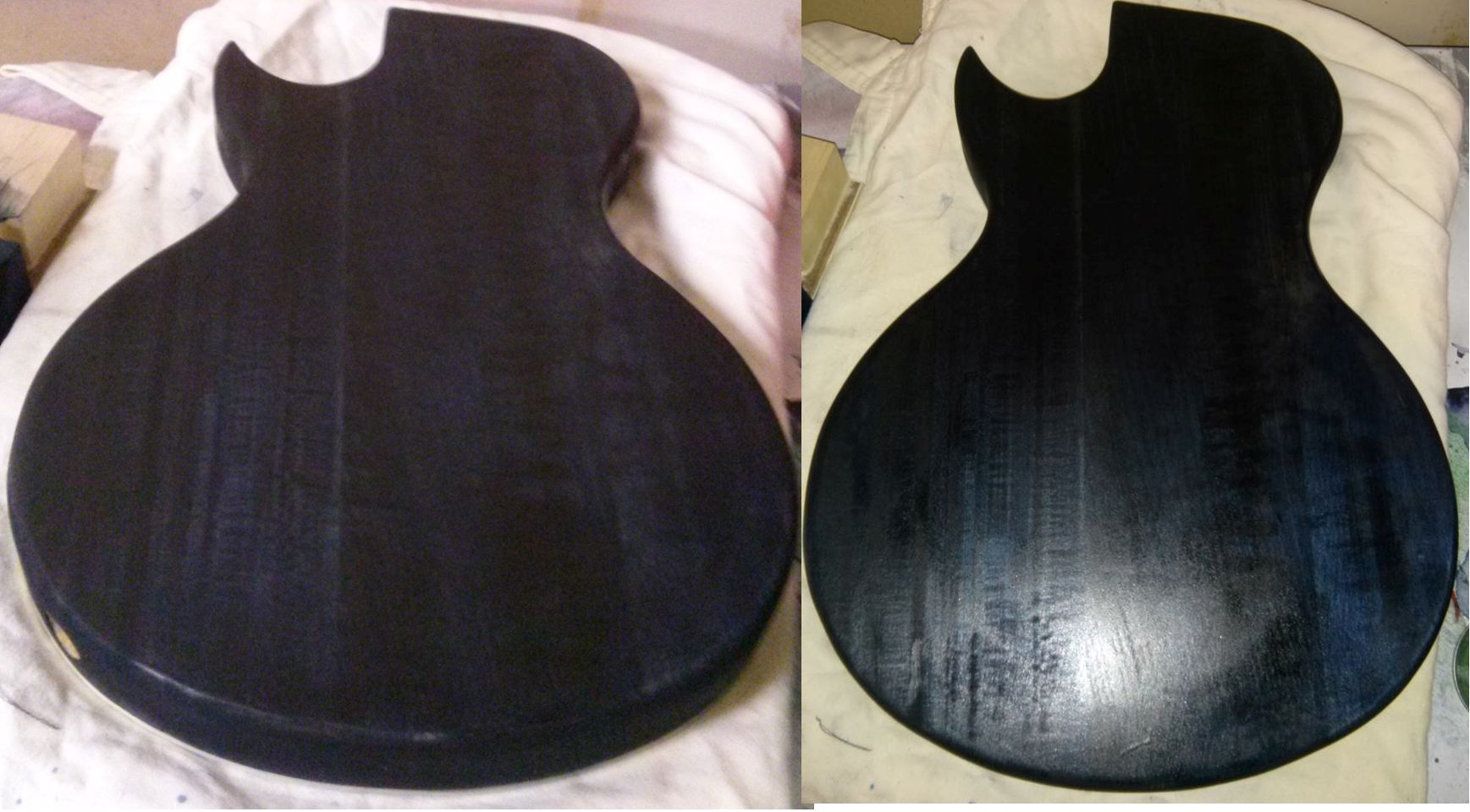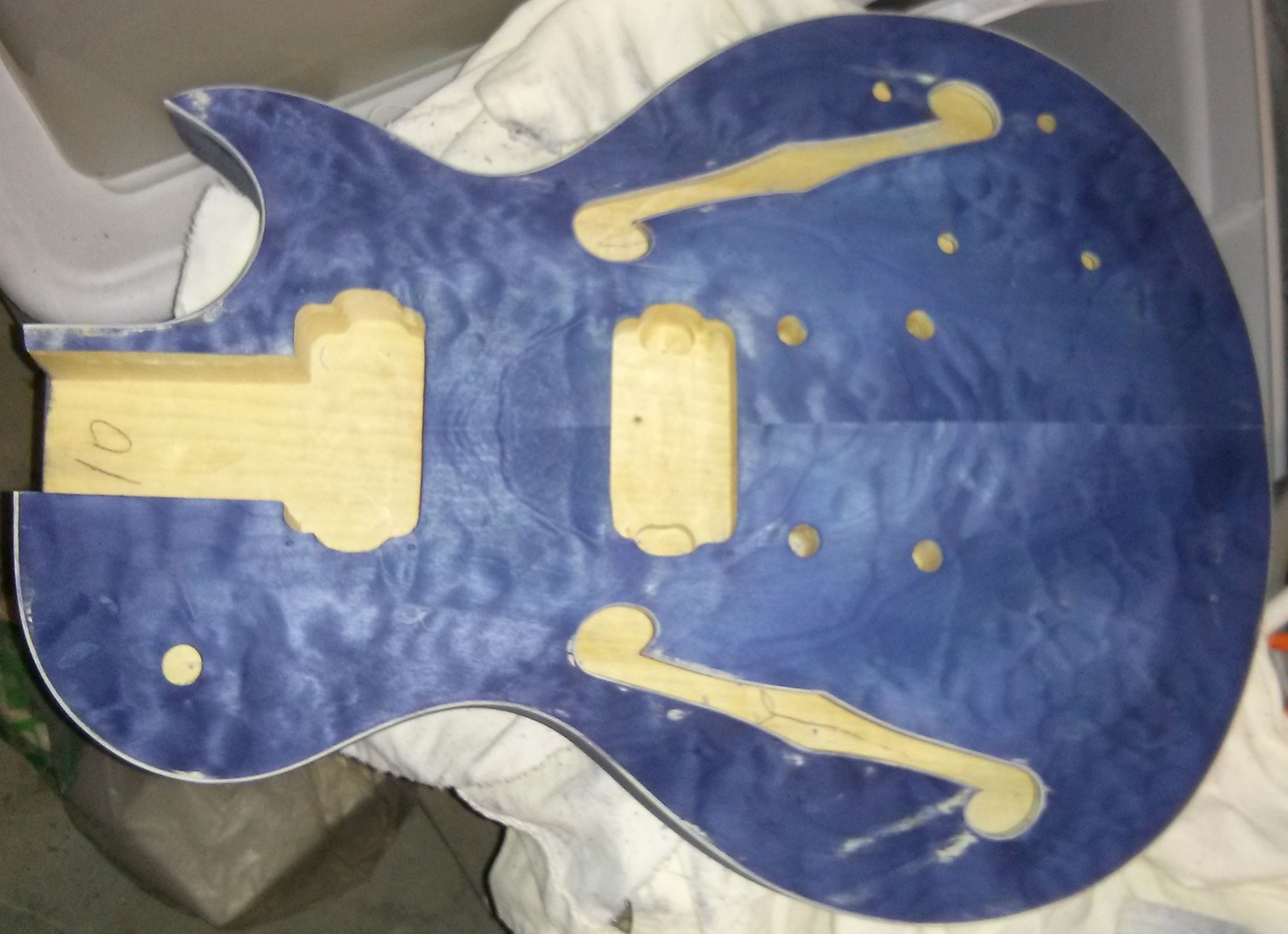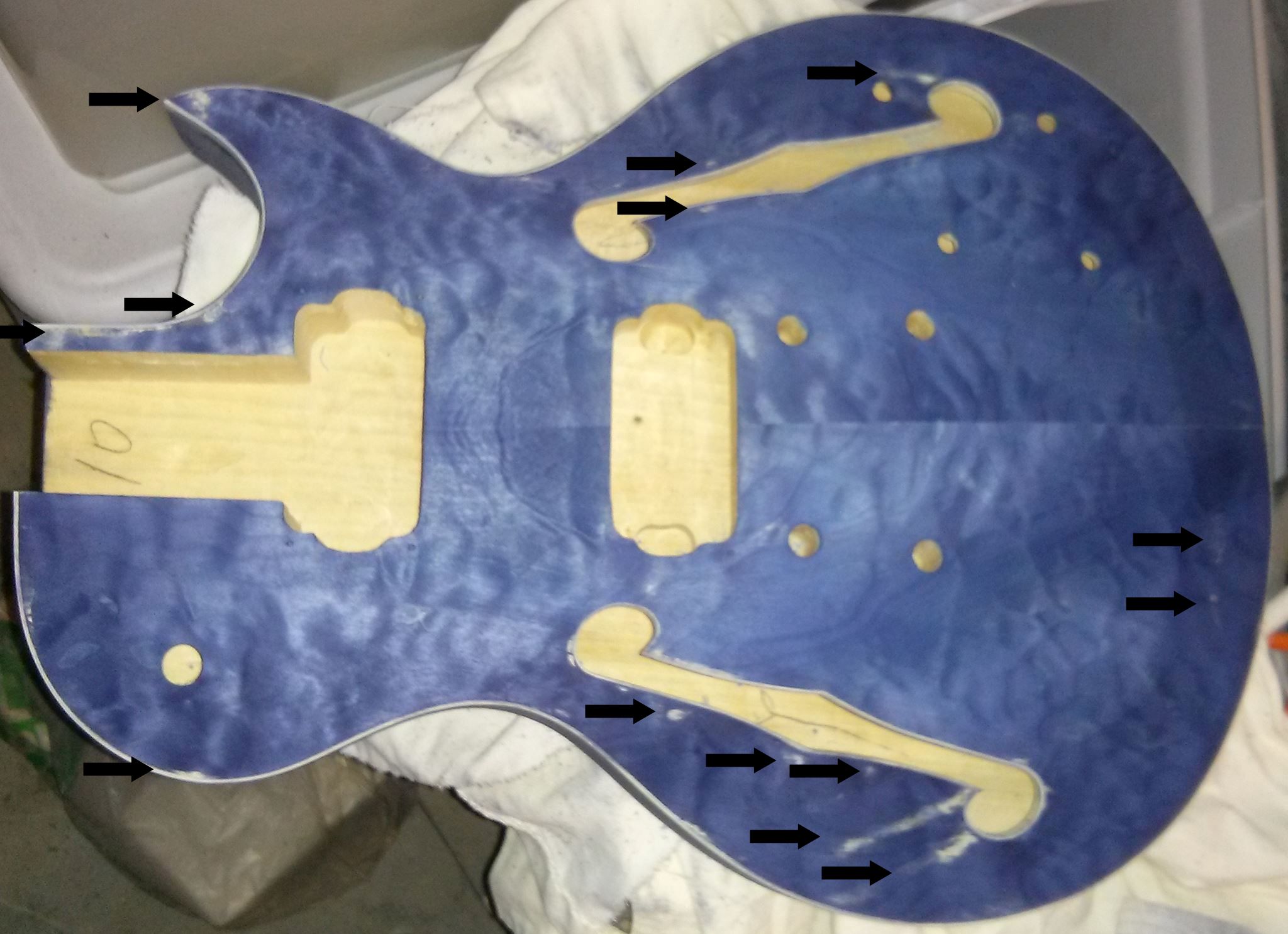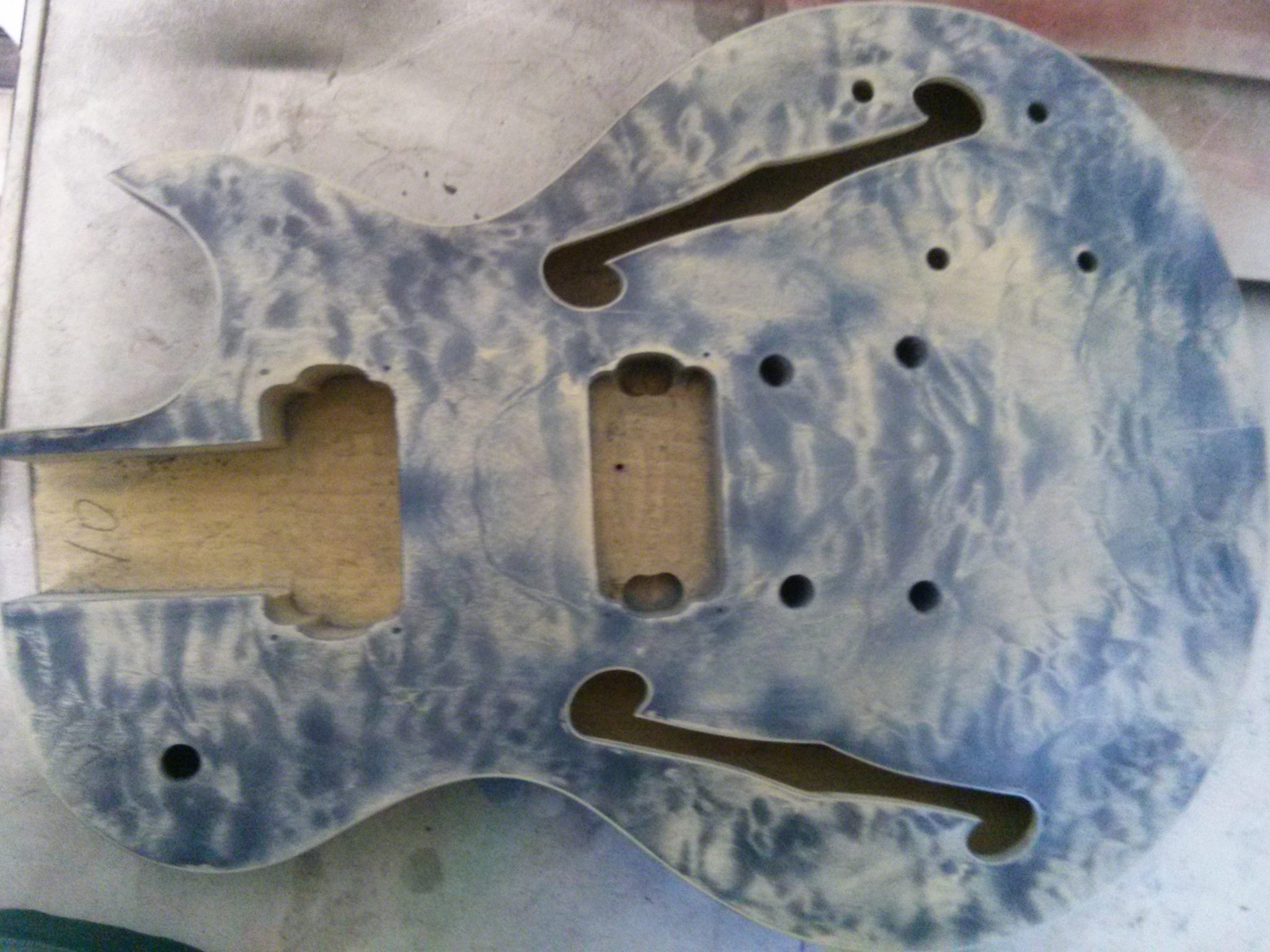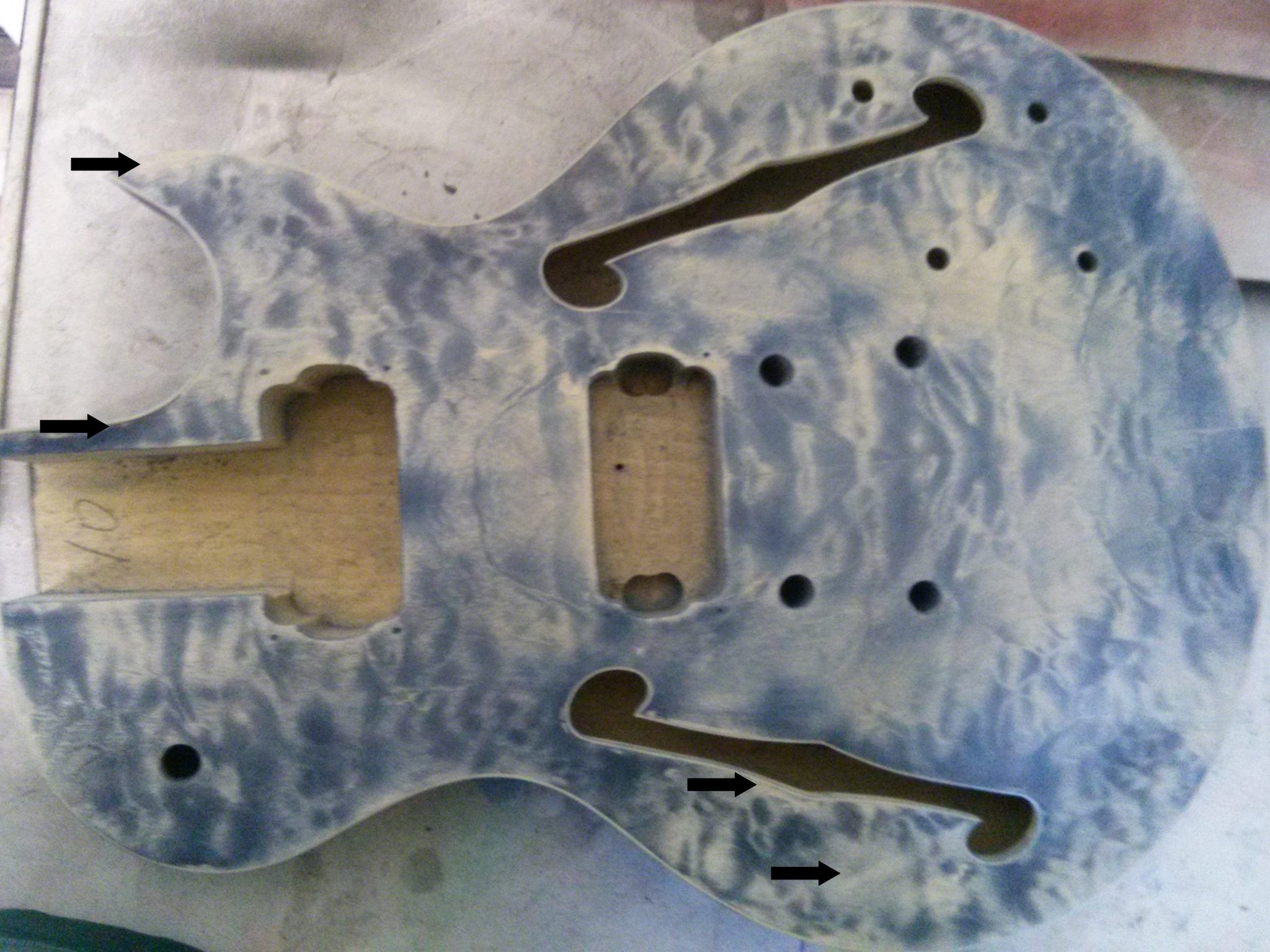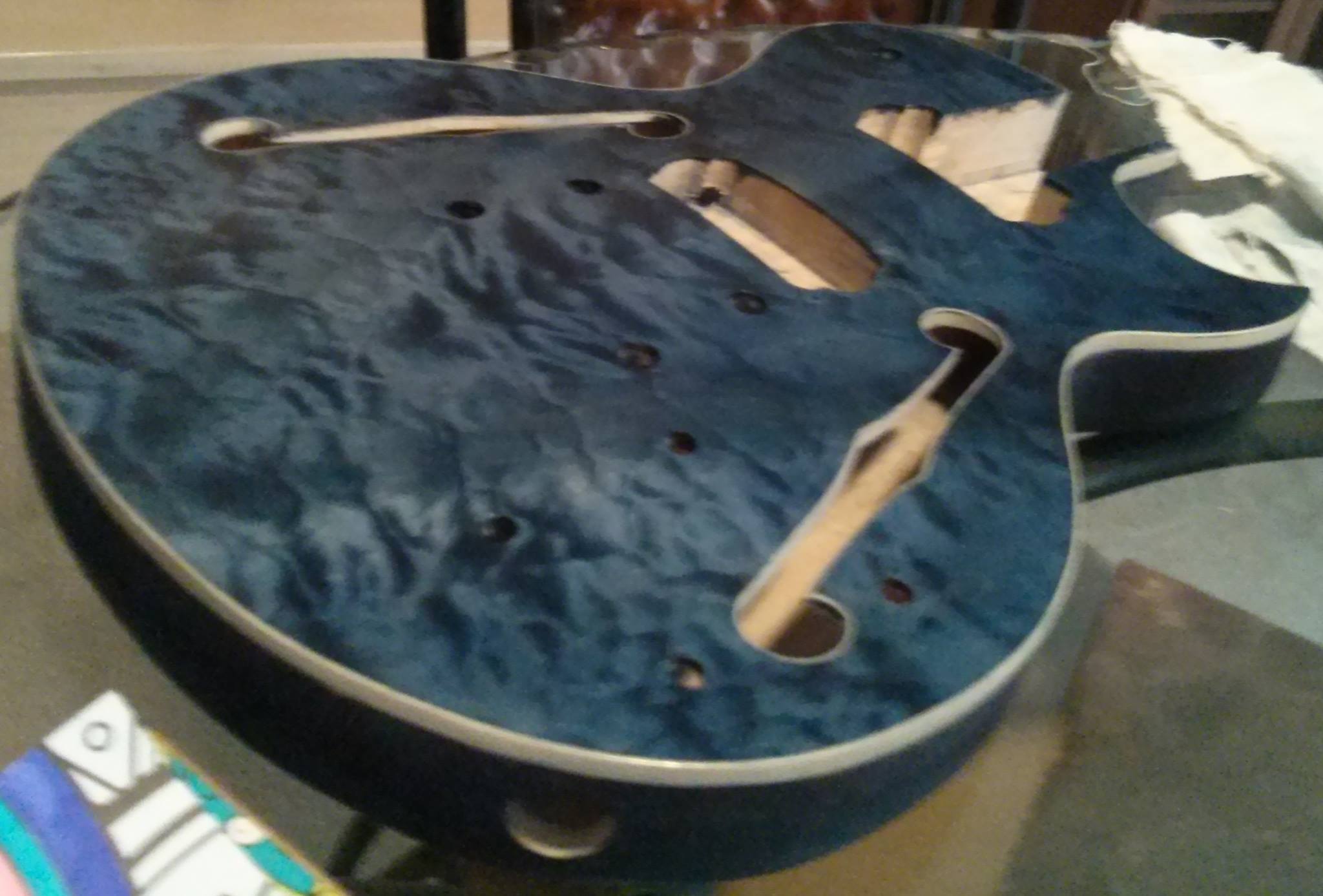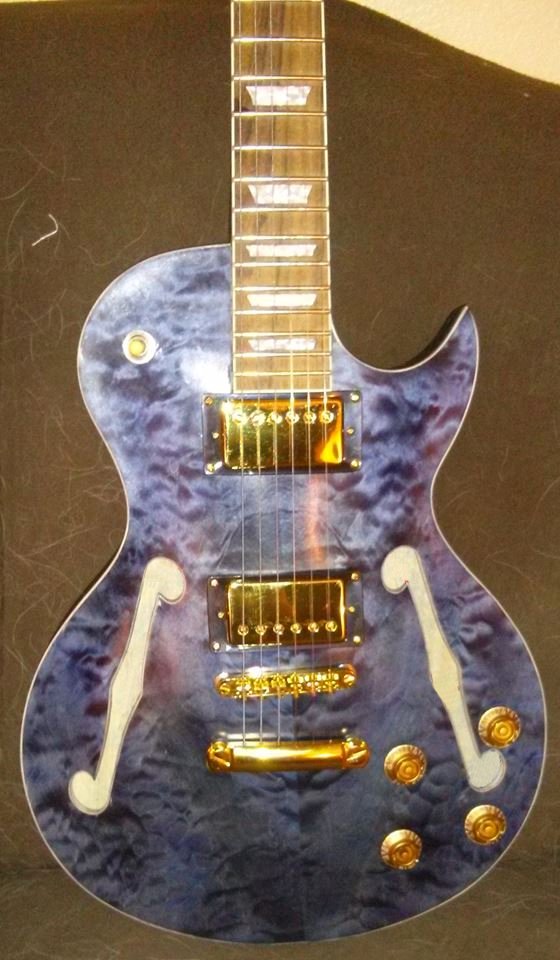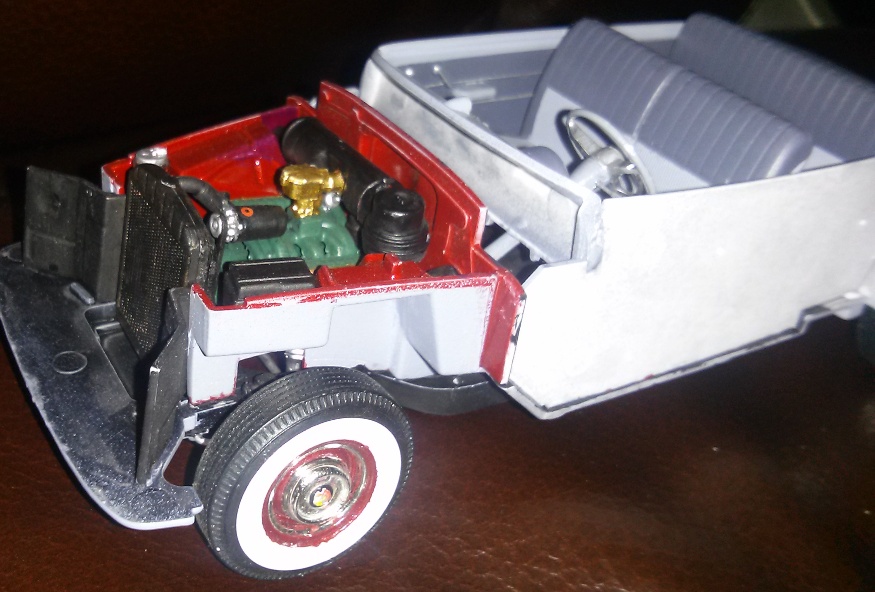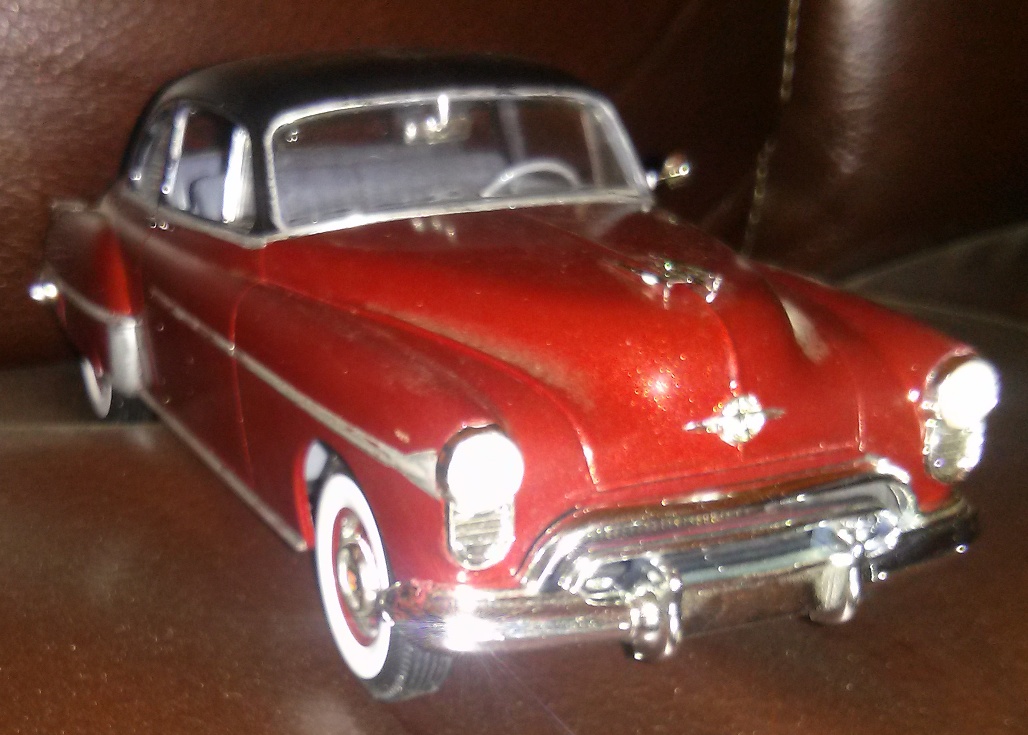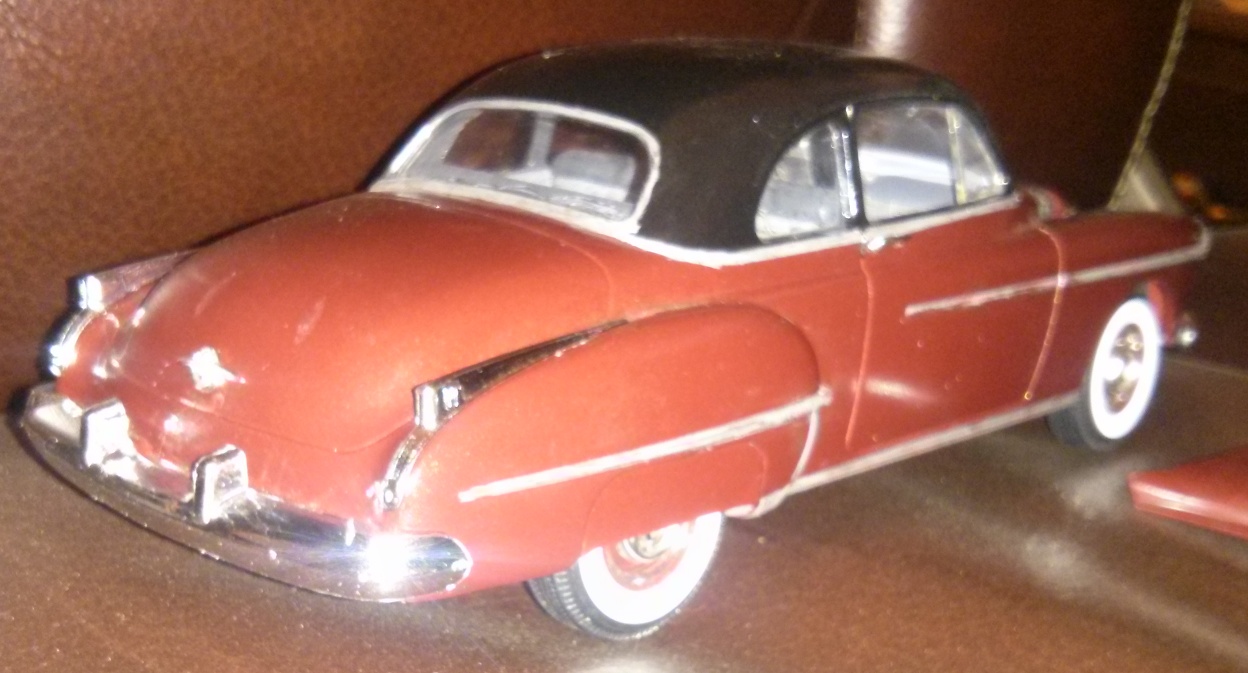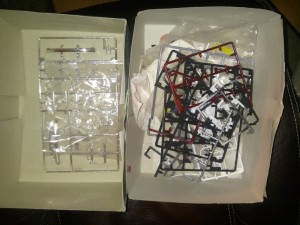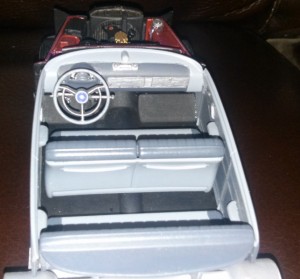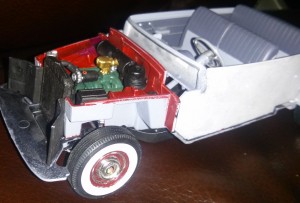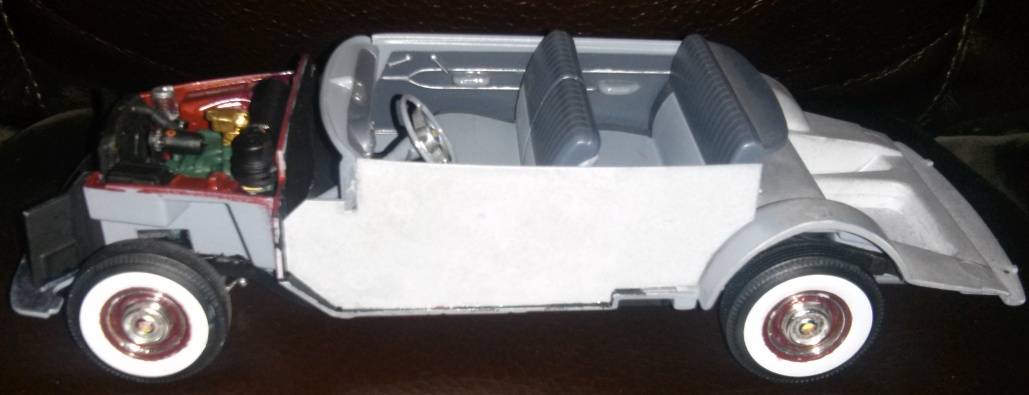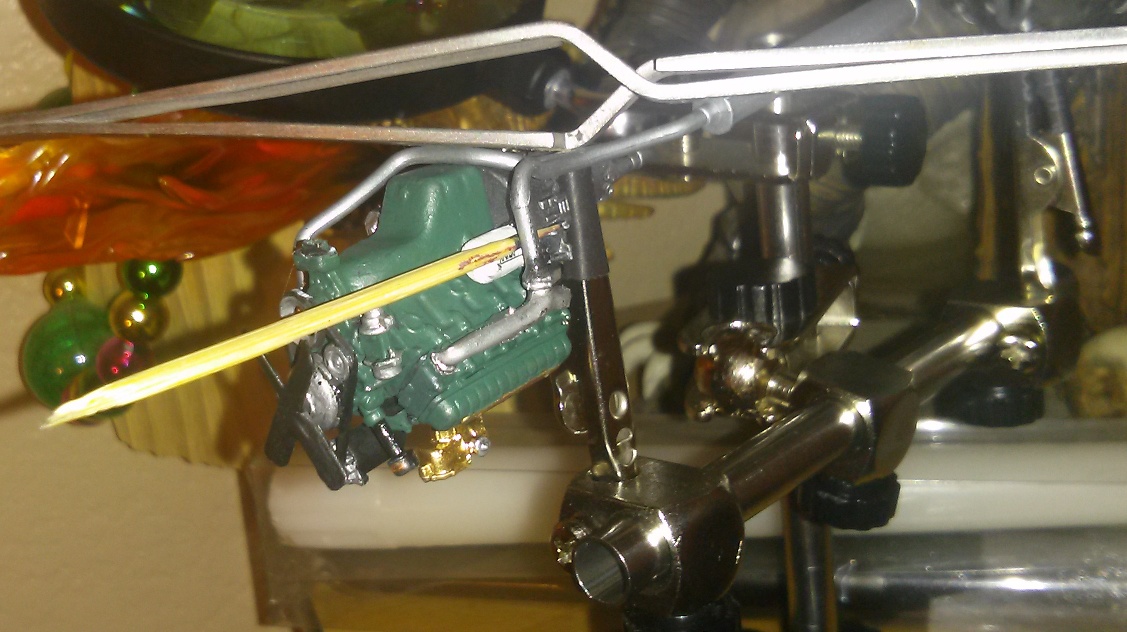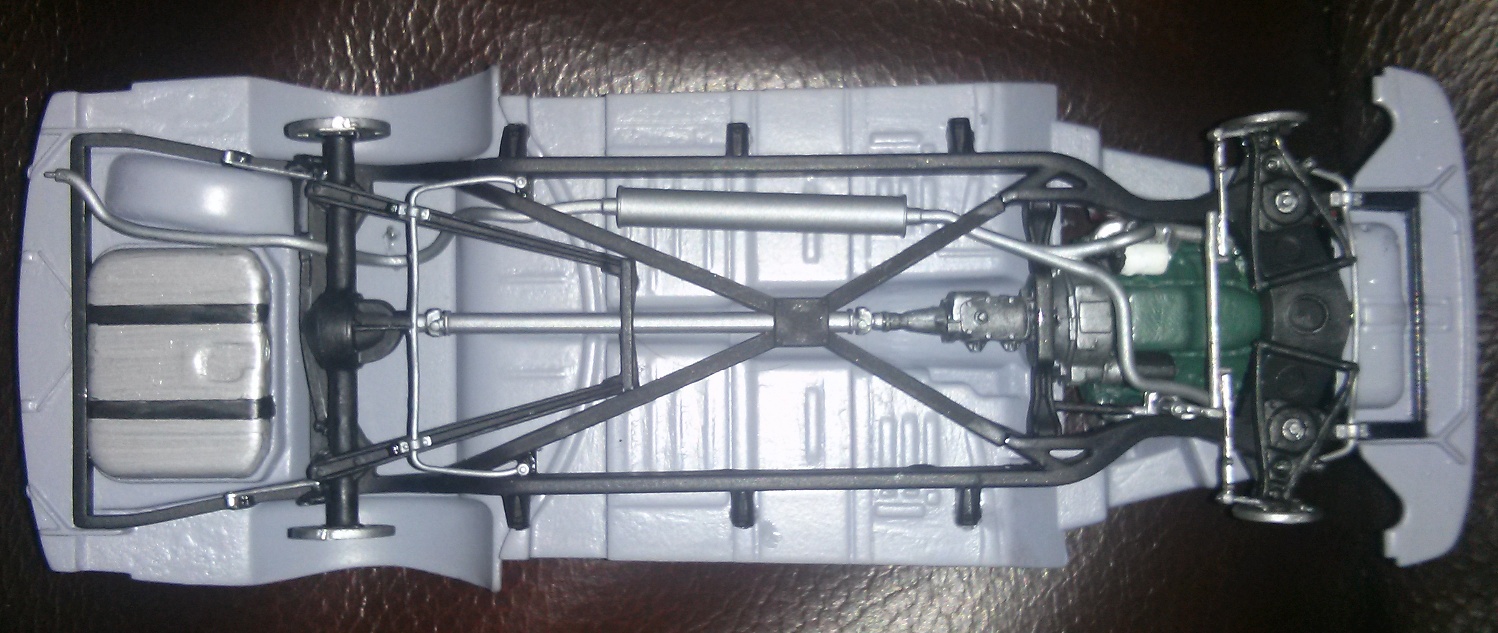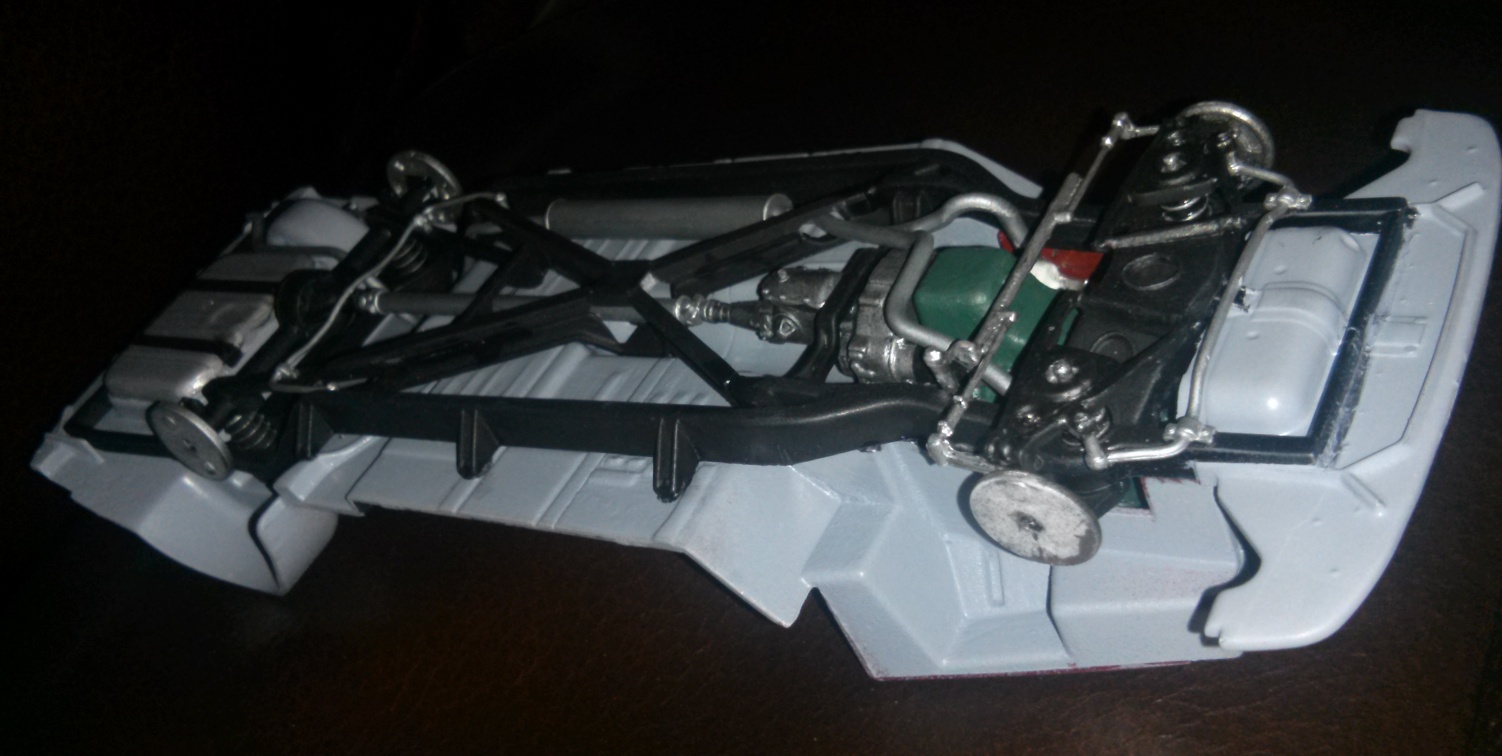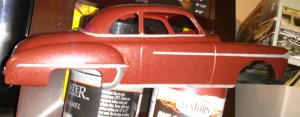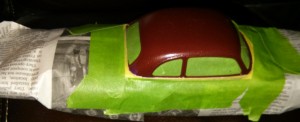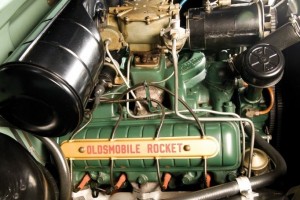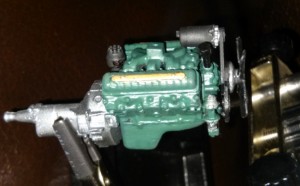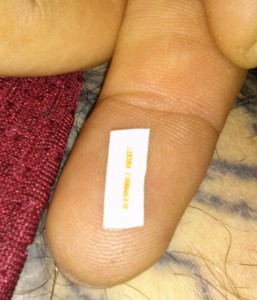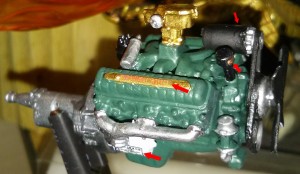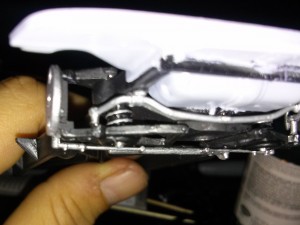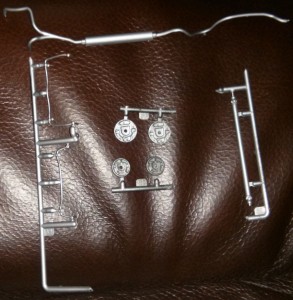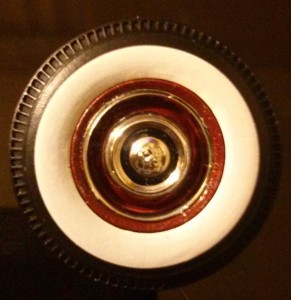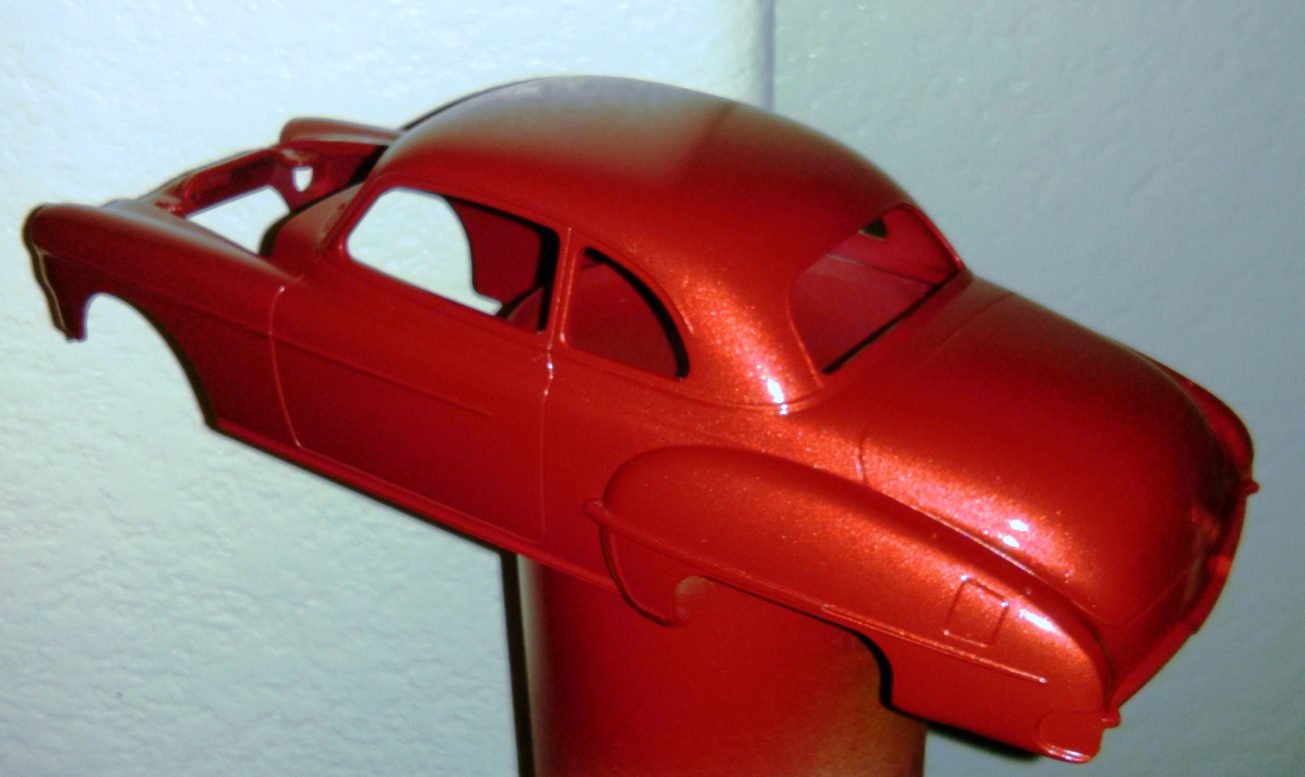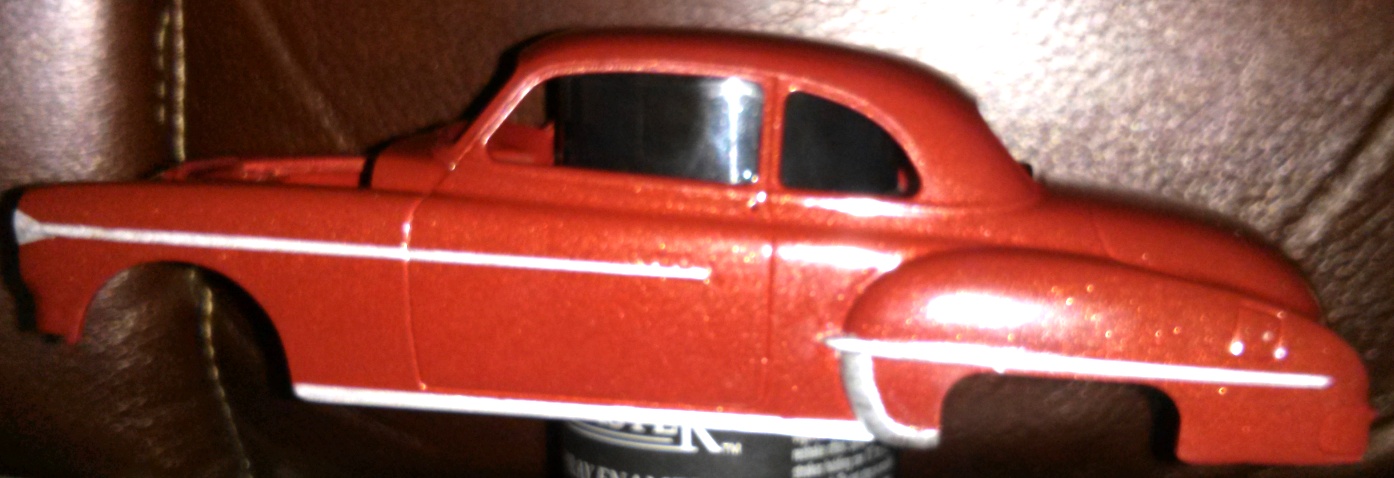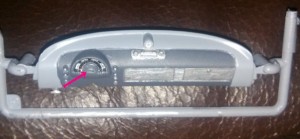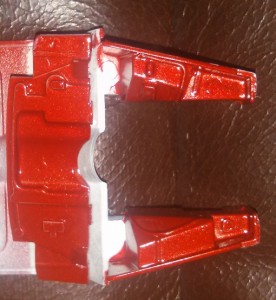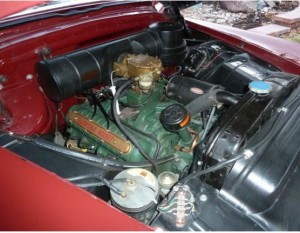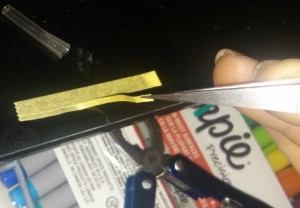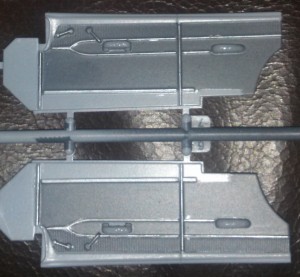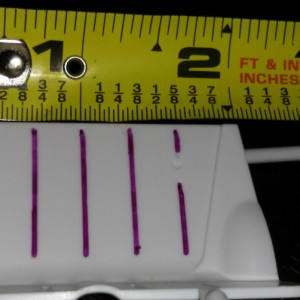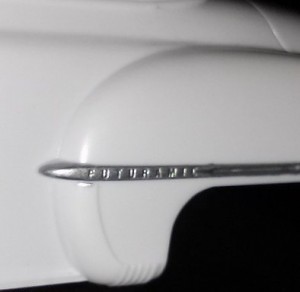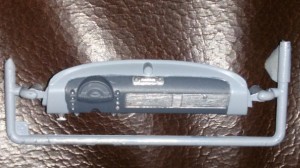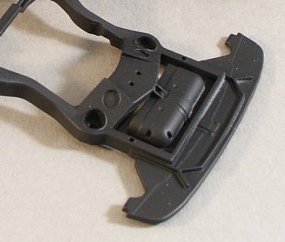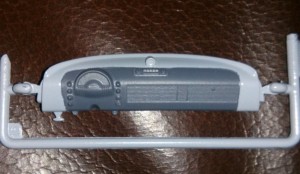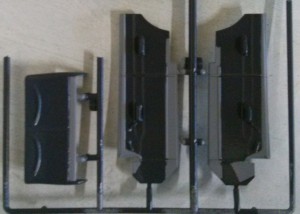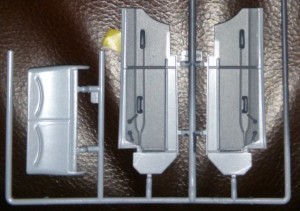So, after some promising but lackluster results with my attempt to refinish a damaged Ibanez G10 guitar I figured why not go whole hog and do one from the ground up? To add a ton to the degree of complexity, I decided to go with a semi-hollow body guitar for full build number one. To further add to the difficulty, I chose to dye the wood grain rather than paint over it. Because seriously, when you’re learning to ski, are you going to learn more on the Bunny Slopes or on K12? (and kudos to anyone who got that reference without clicking the link.
So I ordered up a kit and set to finishing it. The body looked like this coming out of the box:
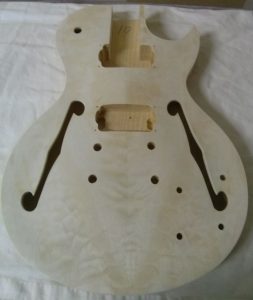 The front had a beautiful grain that I figured I’d be able to finish without much of an issue. Seriously, it looked like I could just throw some blonde (or an equally light-colored) stain on it, lacquer it, and call it a day. That wasn’t my intention though. I bought this specifically to build for my oldest brother, Dennis, for Christmas. The guitar he is currently playing is a semi-hollow body one that I bought for him when I was about sixteen, and that is a damn long time ago. It is showing signs of age, and I thought he might like an upgrade. I was initially pleased with how good the grain on this one looked, because I figured it would be pretty damn easy.
The front had a beautiful grain that I figured I’d be able to finish without much of an issue. Seriously, it looked like I could just throw some blonde (or an equally light-colored) stain on it, lacquer it, and call it a day. That wasn’t my intention though. I bought this specifically to build for my oldest brother, Dennis, for Christmas. The guitar he is currently playing is a semi-hollow body one that I bought for him when I was about sixteen, and that is a damn long time ago. It is showing signs of age, and I thought he might like an upgrade. I was initially pleased with how good the grain on this one looked, because I figured it would be pretty damn easy.
Nope.
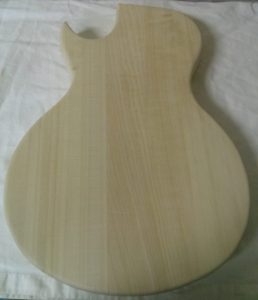 The front of the guitar was a beautiful piece of wood in a butterfly cut, which made for a wonderful grain and some awesome symmetry. The back, on the other hand, looked like this. Since it is a sort of hybrid of acoustic and electric, the front appears to look more acoustic, while the back looks like an electric. That means that it is made of some nasty-ass basswood. More than that, the thought appeared to be ‘fuck the grain, just glue some shit together’. At least that’s what it looks like. I assure you that it looks every bit as bad as this photo (and probably worse). That was disappointing.
The front of the guitar was a beautiful piece of wood in a butterfly cut, which made for a wonderful grain and some awesome symmetry. The back, on the other hand, looked like this. Since it is a sort of hybrid of acoustic and electric, the front appears to look more acoustic, while the back looks like an electric. That means that it is made of some nasty-ass basswood. More than that, the thought appeared to be ‘fuck the grain, just glue some shit together’. At least that’s what it looks like. I assure you that it looks every bit as bad as this photo (and probably worse). That was disappointing.
But since I figured I’d be able to get an easy home run out of the front, I started finishing the back first. I figured I couldn’t paint it, since I was only going to be dying the front, which meant I’d have to dye the back as well. This turned out to be a PROCESS.
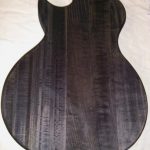 I have to admit that after laying down the first coat of dye (I should mention that I’m using Keda Dyes for the entire finish. Mixed more or less as suggested) I was skeptical that I’d be able to pull this build off. After the first coat (which is still wet in the photo) it looked more or less like I’d taken a magic marker and ran it over the back a bunch of times. I think that may be my way of saying that I thought it looked pretty shitty. You can totally click through that image to see it in larger scale, though I wouldn’t suggest it.
I have to admit that after laying down the first coat of dye (I should mention that I’m using Keda Dyes for the entire finish. Mixed more or less as suggested) I was skeptical that I’d be able to pull this build off. After the first coat (which is still wet in the photo) it looked more or less like I’d taken a magic marker and ran it over the back a bunch of times. I think that may be my way of saying that I thought it looked pretty shitty. You can totally click through that image to see it in larger scale, though I wouldn’t suggest it.
But, after sanding back the black and laying down a coat of dark blue, it started to come around:
Those pictures were taken at the same time but from different angles and with different lighting. The dye was still a bit wet at the time, but I found it odd that one angle showed it a deep blue while the other angle hinted at it being almost purple.
Once it dried, the back began to give off a more even color regardless of the direction of the light. I sanded it back once more, dyed it once more (dark blue) and then layered it with about three coats of spray lacquer. The final result looked like this:
Not exactly the color I was hoping for, but there are enough interesting things going on in the cheap, basswood grain that it still looks totally finished (scroll up a couple photos to that first image of the back if you don’t believe me). The back came out pretty darn good.
Once I’d caressed the ass of this guitar to the point that I was happy, I had to start working the front. That was not such an easy process. I first thought I was going to do a sunburst pattern. Yeah, not so much. Here is the result of the first coat of stain toward that:
You’ll no doubt note the exceptional attention to detail as the dark blue around the edges very gradually fades to the light blue in the center. It’s like a gradient that’s using the full 256 million color capability of modern computers. Goddam seamless is what it was. A perfect sunburst pattern, but done in blue!
Yeah, even I wasn’t believing that bullshit and I tried really hard to believe it. To be fair, I knew it would be pretty stark with the first passing and I would lightly sand it back. I’d then cover it with lighter coats of just the light blue until it got to the point where the transition was seamless. I think I could have pulled that off, but I had to give up on the idea because … At the bottom of the photo (if you were holding the guitar to be playing it, it would be just above the top ‘F hole’. There are several areas the dye just wouldn’t penetrate. My assumption is that there was some sort of glue or solvent still present that the dye simply couldn’t touch. Regardless of why, I knew I couldn’t continue with the sunburst finish.
So I sanded the whole thing back. Not to bare wood, but enough that the light and dark blue no longer appeared to be separate colors. It took a lot of sanding, and I don’t have photos of it along that particular path, but once I’d sanded it back a reasonable amount, I layered the entire front in dark blue. And here is the result:
Yep.
I put about a dozen arrows on that image to highlight the flaws, but they in no way point to ALL the flaws. The thing was fucked even after sanding it back and laying down a new coat of dye. It was just that bad (which is all my fault for not sanding enough in the first place. The surface looked so good to begin with that I started with 220 grit and worked my may to 600 grit. I never considered that I might need a coarse sanding).
The next step was unquestionably the most difficult part (mentally) of the entire process. I had to admit that I was never going to finish the project without basically starting over. I put some 90 grit paper on my orbital sander and, with a tear of regret, destroyed my masterpiece. I took care to sand heavily in the problem areas, but tried to go light in the unaffected areas. I also made sure to leave areas of blue amidst the fully sanded area with the hopes that the contrast would pay off later. After an hour or so (the first half with 90 grit, then 20 minutes with 150 grit, and another 10 with 300 grit) this is what I had:
While I’m not going to take the time to highlight every one of the problem areas again, you will note that I sanded all of the problem areas back to bare wood (a few of which I did highlight. Bear in mind that I was using wood DYE so there was no way to get it back to bare wood). Anyways, here is a photo pointing out a few areas I sanded back to wood while leaving other areas a much darker blue:
I want to note that I spent a lot of time making sure this sanding phase left light and dark areas. It was only when I had to sand the whole thing back that I decided I was going to call the project “Blue Velvet”. I hoped that leaving enough light and dark areas would allow me to pull off that effect in the end.
The good news is that my sanding worked out great. Here it is after a couple coats of dark blue dye and a bit of time to dry:
That is a pretty accurate photo of its state at the time. Probably the most accurate photo of any yet posted. The waves of color came out really well, but there was no … what? Pop? Luster? Sheen? I don’t know. It just lacked something.
When I began this project, I decided that I wasn’t going to finish the front with any sort of lacquer. Instead, I was going to finish it exclusively with Birchwood Casey’s Tru Oil. I arrived at that decision after reading tons of reviews and recommendations about finishing a semi-hollow guitar. Tru-Oil, they say, dries in such a way that it will add luster with each thin coat. The result of that will be that after 20 or 30 coats (and I easily put 50 coats on the front of this thing) each coat will dry differently and give the finish something approaching iridescence. Yeah, I was skeptical too. But after rubbing in a coat of Tur-Oil every half hour that I was awake over the course of two or three days, the finish really started to pop.
Here are a couple images of the final product (the dye and Tru-Oil was completely dry by the time I took these photos):
After all the time spent dying and Tru-Oil’ing this thing (it was definitely dozens of hours and probably hundreds) I was very pleased with just how well it came out. I did buy the gold pickups, gold bridge hardware, and gold knobs aftermarket (the kit came with silver accessories and different colored knobs). And trying to finesse all of those things into place through the f-holes on the guitar was extremely trying. Thankfully there are a lot of youtube videos to help you through wiring a semi-hollow guitar. What there aren’t a lot of youtube videos of is what to do when you try to finish a guitar and part of it simply won’t accept wood stain. I limped through it pretty well, but I wish I had been vain enough to video the process. I think you’d have to agree that from the photos at the top of the page to the photos on the bottom, I really nailed this one.
As a final note, The Fret Wire (the place I bought my guitar kit) featured MY GUITAR BUILD -dubbed ‘Blue Velvet’– on their website on January 2, 2017. So it may not be me blowing my own horn when I say the final product looks pretty damn good.

